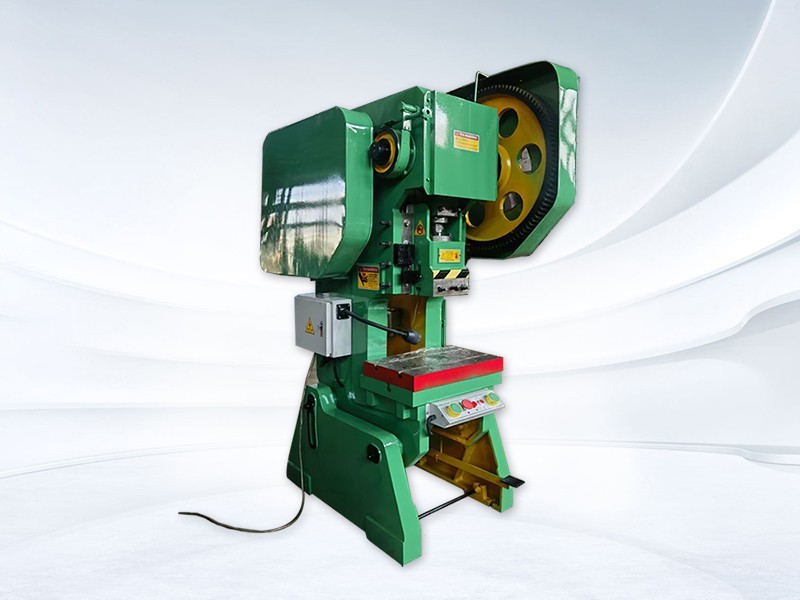In today's rapidly developing manufacturing industry,
mechanical power press, as key metal forming equipment, are undergoing unprecedented technological innovation and upgrades. In recent years, with the deepening of the concepts of Industry 4.0 and intelligent manufacturing, the design, manufacturing, and application of mechanical power press have undergone revolutionary changes. This news will focus on the latest developments in mechanical power press, exploring how their technological innovations can lead the manufacturing industry towards a more efficient and intelligent future.
There are many names for the parts of mechanical power press, and the following is an introduction to their main parts and names:
1. Upper mold: The upper half of the entire die, which is installed on the slide of the press machine.
2. Upper mold seat: The top plate-shaped part of the upper mold, which is tightly attached to the press slide and fixed to the press slide through the mold handle or directly.

3. Lower die: The lower half of the entire punching die, which is installed on the worktable of the press.
4. Lower mold seat: a plate-shaped part on the bottom surface of the lower mold, which is directly fixed on the worktable or pad of the press during operation.
5. Convex mold: A convex working part in a die that directly forms a punch, that is, a part with the outer shape as the working surface.
6. Concave die: A concave working part in a die that directly forms a punch, that is, a part with an inner shape as the working surface.
7. Guide sleeve: a tubular component that provides precise guidance for the relative movement of the upper and lower mold seats, mostly fixed inside the upper mold seat and used in conjunction with the guide column fixed in the lower mold seat.
8. Guide post: a cylindrical component that provides precise guidance for the relative movement of the upper and lower mold seats, mostly fixed on the lower mold seat and used in conjunction with the guide sleeve fixed on the upper mold seat.
9. Guide plate: a plate-shaped component with precision sliding inner holes with convex molds, used to ensure the mutual alignment of convex molds and concave molds, and to serve the purpose of unloading (parts).
10. Unloading plate: A fixed or movable plate-shaped part that unloads materials or workpieces from a convex mold, sometimes integrated with a guide plate, and also serves as a guide for the material.
11. Fixed plate: a plate-shaped component that fixes the convex mold.
12. Protective plate: A plate-shaped component that prevents fingers or foreign objects from entering the hazardous area of the die.
13. Material press plate (ring): A part used in stamping dies to press down on stamping materials or process parts to control material flow. In deep drawing dies, the material press plate is mostly referred to as a material press ring.
14. Top plate: A plate-shaped component that moves within a concave mold or module to directly or indirectly push out workpieces or waste materials in an upward motion.
15. Top rod: A rod-shaped component that directly or indirectly pushes out a workpiece or material in an upward motion.
16. Guide pin: a pin shaped part that extends into the material hole to guide its position in the concave mold.
17. Side blade: A convex mold that cuts a feeding positioning gap on the side of a strip (belt, roll) material.
18. Side pressure plate: A plate-shaped component that applies pressure to one side of a strip (belt, roll) material through a spring, urging the other side to closely adhere to the guide plate.
19. Bearing plate: Used to extend the flat surface of the concave die and support the plate-shaped parts of the stamping material.
20. Material guide plate: A plate-shaped guiding component that guides the strip (belt, roll) material into the concave mold.
In addition, there are parts such as blade slope, reverse pressure block, guide plate mold, guide column mold frame, combination die, limit sleeve, limit column, positioning pin (plate), fixed discharge plate, fixed stop pin (plate), unloader, discharge screw, single process mold, waste cutter, initial stop pin (plate), joint block, stop block (plate), pressure bar, pressure sill, and gear ring.
These components work together to enable mechanical power press to complete various stamping processes. It is very important to understand the names and functions of these parts during the use and maintenance of the punch press.

 Address:Room 1202, Detaitang Building, No. 118 Huaguang Road, Zhangdian District, Zibo, Shandong
Address:Room 1202, Detaitang Building, No. 118 Huaguang Road, Zhangdian District, Zibo, Shandong WhatsApp:+8615653328535
WhatsApp:+8615653328535 Wechat: +8615965331535
Wechat: +8615965331535  E-mail:zs@sdsmachinery.com
E-mail:zs@sdsmachinery.com